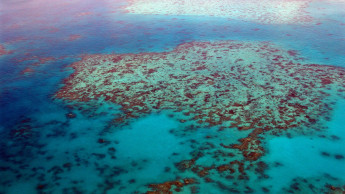In 1998, the US House of Representatives implemented the Tropical Forest Conservation Act (TFCA). Under the terms of this Act, developing countries with a standing debt to the US could receive relief from this debt if they were to take action to protect their tropical forests. While such action would not qualify low and middle income countries for total relief of their debts, substantial reductions could be achieved.
This Act has apparently been well received, although its effectiveness has been difficult to assess. Since its inception, though, there has been an obvious gap in its terms of reference: the ‘forests’ of the seas, i.e. coral reefs. This omission has meant that developing countries which do not have forests, but have effective coral reef conservation programmes in place – including sustainable harvest programmes and ethical eco-friendly harvesting strategies – have been at a disadvantage with regard to obtaining potential benefits from the provisions of the Act; as have countries which have both forests and coral reefs.
Conscious of this shortcoming, Florida Representative Alcee Hastings, supported by another Floridian Representative, Kathy Castor, and the Florida Aquarium, put forward an amendment to the existing Act, which was due to expire in any case at the end of 2007. The amendment was duly discussed and passed by the House of Representatives on 9 October 2007, and has now been in force for a few months.
Renamed the Tropical Forest and Coral Conservation Act, the new, expanded Act now includes tropical forests, coral reefs and, importantly, “associated coastal marine ecosystems.” The Amendment sets aside $ 30 mio per year for the years 2008, 2009 and 2010 “to restructure debt owed to the United States in exchange for agreements that the indebted countries would conserve tropical forests, coral reefs and coastal marine ecosystems”. The new terms of reference include the “authority to reduce and to restructure debt, to swap debt, or to sell debt back to an eligible country in ways that will generate income for conservation efforts.”
Measures to rectify the situation
One of the difficulties with the TFCA of 1998 has been that, while the programme measures the loss of forest cover in eligible countries, it has been unable to measure the impact of the Act on actually increasing tropical forest conservation. Several steps are therefore being taken to rectify this situation. For instance, using…

 Menü
Menü







 5-6/2008
5-6/2008












 Newsletter
Newsletter